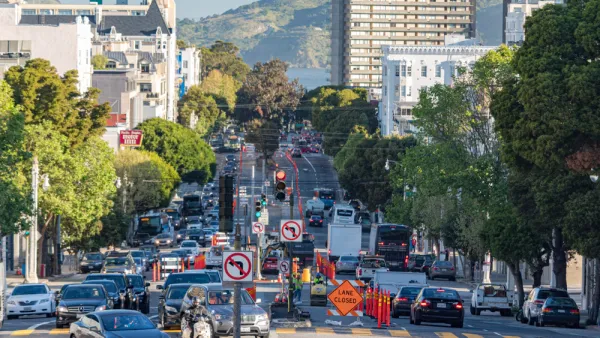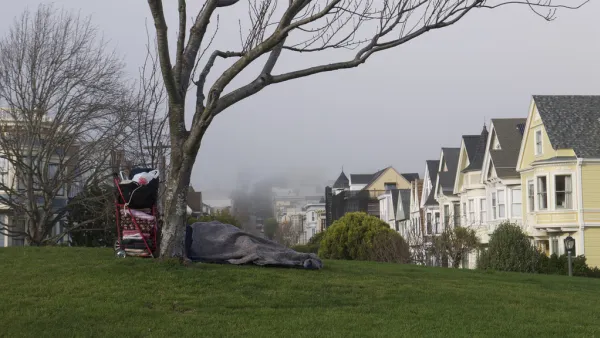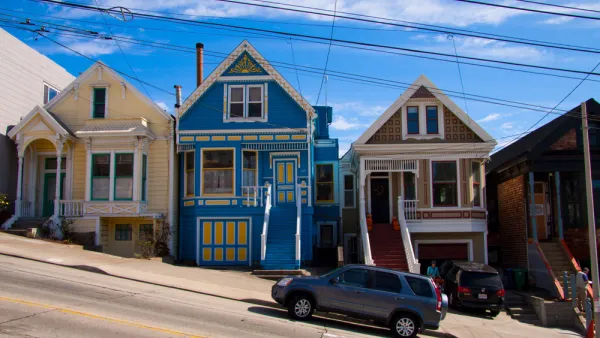Sen. Scott Wiener introduced legislation to make state highways that run through villages, town, and cities, often acting as main streets, accommodate the safety needs of walkers, cyclists, and transit users when undergoing capital improvements.
It was just over a decade that Republican Gov. Arnold Schwarzenegger signed Sen. Mark Leno's (D-San Francisco) landmark legislation, Assembly Bill 1358, the Complete Streets Act, ensuring that all local streets and roads accommodate the needs of bicyclists, pedestrians and transit riders, as well as motorists.
State highways, the domain of the California Department of Transportation (Caltrans), was the subject of an internal policy document known as Deputy Directive 64 [pdf], "that explicitly embraces Complete Streets as the policy covering all phases of state highway projects, from planning to construction to maintenance and repair," according to a Complete Streets Fact Sheet prepared by the California Bicycle Coalition (CalBike). However, progress has been slow.
“For too long, Caltrans has talked about complete streets as a policy, but hasn’t actually delivered these improvements in its projects," said Sen. Scott Wiener [D-San Francisco) at a press conference held at Zuckerberg San Francisco General Hospital on Jan. 14.
"SB 127 ensures that as we rehabilitate state highways that run through the centers of our towns and cities, we prioritize active transportation uses like walking, bicycling, and riding public transportation.
"Streets designed for all residents create safer, healthier, and more inclusive communities. Ensuring everyone has access to safe streets also encourages alternate modes of transportation, which can help reduce vehicle miles traveled, and help us fight climate change.”
The bill "is stronger and more thorough than the Complete Streets bill Wiener introduced last year [SB 760] but let die when Prop 6 threatened to disrupt new gas tax revenue," reports Melanie Curry, editor of Streetsblog California.
According to the legislation, the bill would require Caltrans, by January 1, 2021, "when undertaking any capital improvement project on a state highway or a local street crossing a state highway that is funded through the State Highway Operation and Protection Program, to include new pedestrian and bicycle facilities, or improve existing facilities, as part of the project."
At the press conference, speakers in support of the legislation addressed traffic crashes that injured walkers and cyclists on 19th Ave. and Park Presidio Blvd., both part of State Route 1, maintained by Caltrans.
Dr. Rebecca Plavin, a trauma surgeon at the hospital, stated that her department treats about 4,000 patients annually for trauma, "and nearly half are injured in traffic collisions...and about half of those are pedestrians and cyclists."
Additionally, the bill would establish a Division of Active Transportation within Caltrans to oversee the existing Active Transportation Program and require that an undersecretary of the Transportation Agency be assigned to it.
SB 127 is sponsored by the California Bicycle Coalition, the Safe Routes to School National Partnership, California Walks, and the American Heart Association/American Stroke Association.
FULL STORY: Bill Would Make State Highways–Which Are Often City Streets–Accommodate All Users

Analysis: Cybertruck Fatality Rate Far Exceeds That of Ford Pinto
The Tesla Cybertruck was recalled seven times last year.

National Parks Layoffs Will Cause Communities to Lose Billions
Thousands of essential park workers were laid off this week, just before the busy spring break season.

Retro-silient?: America’s First “Eco-burb,” The Woodlands Turns 50
A master-planned community north of Houston offers lessons on green infrastructure and resilient design, but falls short of its founder’s lofty affordability and walkability goals.

Test News Post 1
This is a summary

Analysis: Cybertruck Fatality Rate Far Exceeds That of Ford Pinto
The Tesla Cybertruck was recalled seven times last year.

Test News Headline 46
Test for the image on the front page.
Urban Design for Planners 1: Software Tools
This six-course series explores essential urban design concepts using open source software and equips planners with the tools they need to participate fully in the urban design process.
Planning for Universal Design
Learn the tools for implementing Universal Design in planning regulations.
EMC Planning Group, Inc.
Planetizen
Planetizen
Mpact (formerly Rail~Volution)
Great Falls Development Authority, Inc.
HUDs Office of Policy Development and Research
NYU Wagner Graduate School of Public Service




























